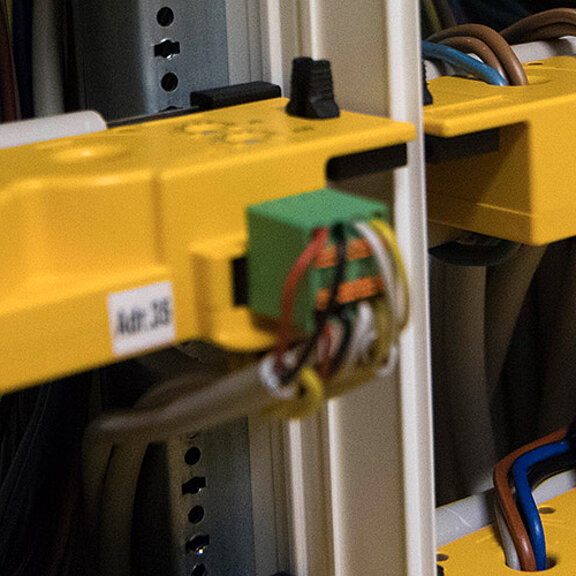

In modern electrical installations, extensive monitoring by different sensors is required. This is the only way to guarantee both safety and high availability.
Wherever an uninterrupted power supply has to be ensured, whether in industrial plants, data centres or building technology, but at the same time the use of an unearthed power supply (IT system) is not possible for various reasons, monitoring using residual current technology has become established. This technology makes it possible to detect fault currents* in electrical installations long before critical system states or even a shutdown by residual current devices occurs.
Modern electrical installations are becoming larger and more complex. Monitoring in the main distribution board using residual current technology is therefore no longer sufficient to ensure high availability. The installations to be monitored are far too large and the currents occurring are far too high to be able to detect gradual changes in parts of the installation (e.g. due to individual faulty loads). System operators who only use residual current measurement technology in the main distribution board and believe that their installation is sufficiently protected against possible failures are therefore lulled into a false sense of safety.*
The larger and more complex electrical installations are, the more precise the monitoring should be. This is the only way to clearly detect fault currents in large installations, identify and locate the sources of faults better (or faster or more easily) and thus prevent unplanned downtimes.
Conventional devices are usually not suitable for monitoring in sub-distribution boards and final circuits. Their measuring ranges are too large to detect smaller fault currents. Bender has therefore developed special sensors and evaluators that are suitable for monitoring electrical installations from the main distribution board to individual final circuits*.
The Bender portfolio of residual current monitoring devices is designed for installation-wide use and offers flexible solutions for every location. On the one hand, there are powerful products with a high current-carrying capacity for use in the main distribution board and, on the other, compact and cost-effective sensors for monitoring final circuits. The various devices and sensors are equipped with communication interfaces. They can be connected to form a system that is monitored from a central location.
The compact RCMB13x series and the modular RCMB300 series were developed for use in final circuits. The portfolio is complemented by the multi-channel RCMS150 residual current monitor and the RCMB330 split-core sensors for AC/DC-sensitive residual current monitoring.
All devices have extensive frequency filter options for the wide frequency range up to 100 kHz and thus support the analysis of leakage and fault currents in the installation, allowing better conclusions to be drawn about sources of faults.
In addition, all the devices described here for final circuit applications are equipped with a Modbus RTU interface so that they can be easily integrated into a larger overall system (such as a PLC).
The RCMB13x series offers AC/DC-sensitive residual current monitoring for nominal load currents of up to 32 A and, with an internal diameter of the transformer of 15 mm, is sufficient for feeding through cables with a cross-section of 4 x 6 mm². This makes the devices particularly suitable for final circuits. They combine evaluation electronics and a measuring current transformer in one housing and, thanks to their compact design, they can also be used when there is not much space available.
The RCMB13x series is also suitable for standard installation in power distribution systems such as PDUs (Power Distribution Units). Manufacturers (OEMS) can easily integrate the modules into their products. There is also a version with solder pins for direct mounting on printed circuit boards. The devices can be easily connected to a higher-level third-party system (e.g. controller of the PDU) via the Modbus RTU interface. This means that current measured values and states are permanently available.
The high-performance devices of the RCMB300 series are ideal for industrial use of residual current technology in final circuits. Thanks to their modular design with different transformer sizes, these sensors can be used in a wide variety of final circuit applications with low to high load currents. They can also be used to monitor applications with special requirements in terms of measuring accuracy or insensitivity to external interference, as the measuring current transformers are optionally available with a full magnetic shield. In applications with very high and pulsed load currents, this shield ensures that the detection of residual currents is not affected by the rapid load changes.
If a larger number of outgoing final circuits are to be equipped with residual current monitoring systems, a six-channel solution can be used with the RCMS150. Like the devices in the RCMB13x series,they combine a measuring current transformer and evaluation electronics in one housing. The technical features are also essentially identical to this device series, meaning that the performance of the RCMS150 is also specially designed for final circuits up to 32 A.
Retrofitting residual current monitoring in existing installations poses particular challenges. On the one hand, there is often very little space available for sensors and evaluators, and on the other hand, installing the sensors is anything but easy. In order to disconnect the cables, the installation must be switched off.
The split-core devices of the RCMB330 series provide a smart single-channel solution that can be easily installed in existing systems: Open the current transformer, place it around the conductors, close it again and wire the interface - done. The installation does not have to be switched off. The RCMB330 combines evaluator and measuring current transformer in a compact housing so that this series can also be used for monitoring final circuits.
With a wide range of solutions for final circuits, Bender offers the option of individually monitoring the loads in an electrical installation in contrast to classic residual current monitoring. This is because loads in particular are often sources of leakage and fault currents. Only through targeted monitoring can insulation faults be found and eliminated quickly.
Products
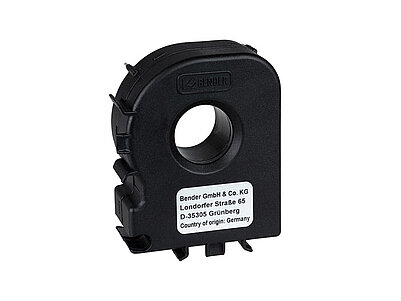
AC/DC sensitive residual current monitoring module for measuring AC and DC currents up to ±100 mA
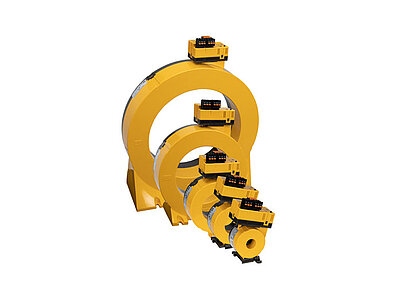
AC/DC sensitive residual current monitoring modules for monitoring applications
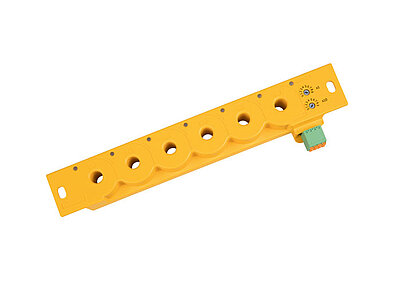
AC/DC sensitive residual current monitor (type B) with 6 integrated measuring current transformers
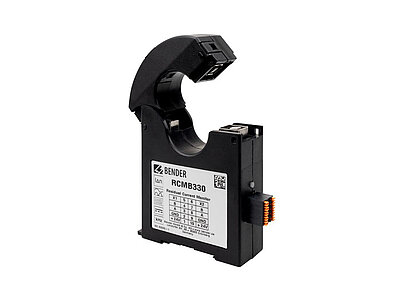
AC/DC sensitive residual current monitoring module with integrated split-core measuring current transformer

AC/DC sensitive residual current monitoring module for measuring AC and DC currents up to ±100 mA

AC/DC sensitive residual current monitoring modules for monitoring applications

AC/DC sensitive residual current monitor (type B) with 6 integrated measuring current transformers

AC/DC sensitive residual current monitoring module with integrated split-core measuring current transformer